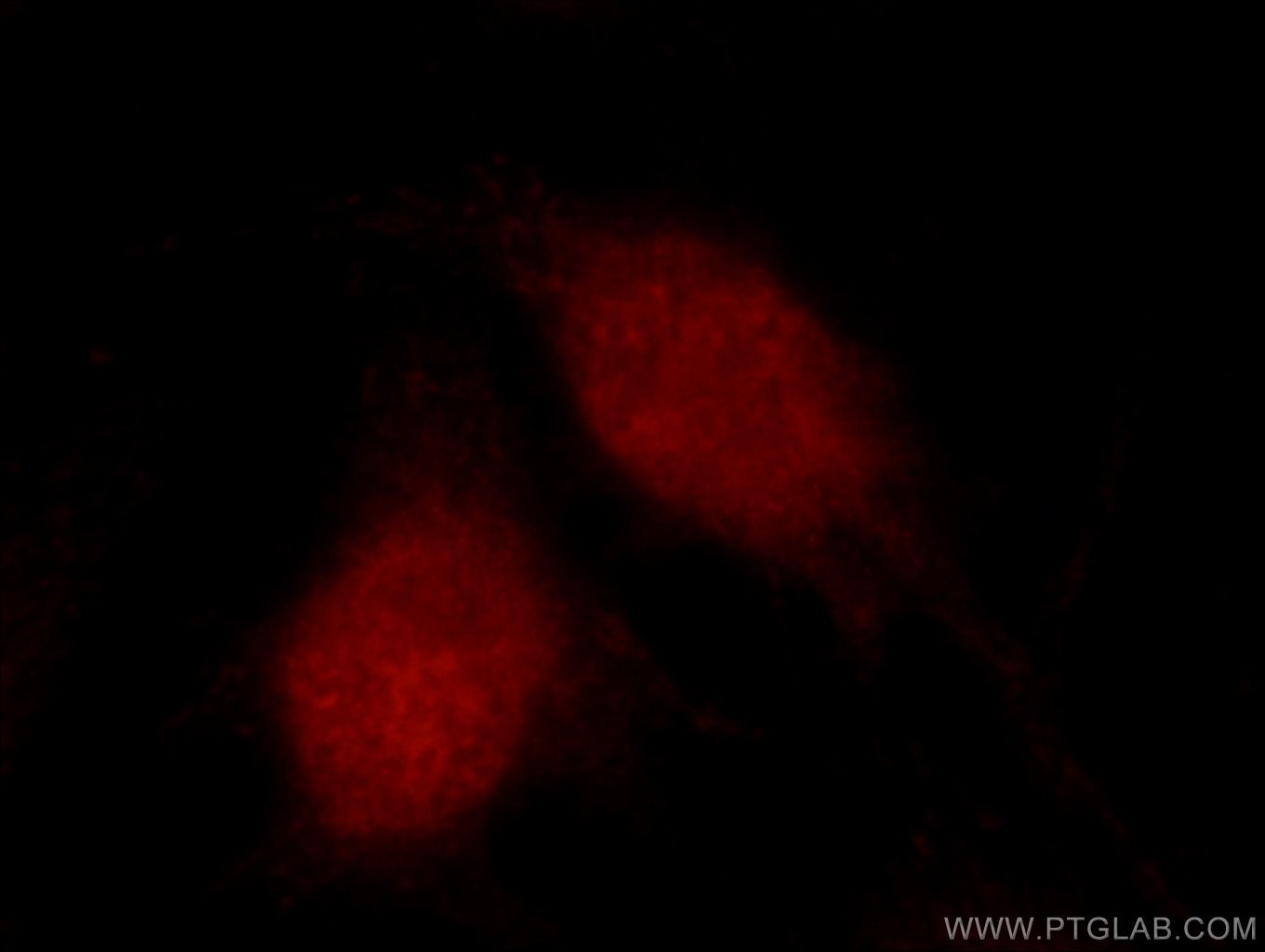Caspase 9/p35/p10 Polyclonal antibody
Caspase 9/p35/p10 Polyclonal Antibody for WB, IF, IHC, ELISA
Host / Isotype
Rabbit / IgG
Reactivity
human and More (1)
Applications
WB, IF, IHC, ELISA
Conjugate
Unconjugated
Cat no : 23821-1-AP
Synonyms
Validation Data Gallery
Tested Applications
| Positive WB detected in | HeLa cells, |
| Positive IHC detected in | human pancreas tissue, human heart tissue Note: suggested antigen retrieval with TE buffer pH 9.0; (*) Alternatively, antigen retrieval may be performed with citrate buffer pH 6.0 |
| Positive IF/ICC detected in | HUVEC cells |
Recommended dilution
| Application | Dilution |
|---|---|
| Western Blot (WB) | WB : 1:500-1:2000 |
| Immunohistochemistry (IHC) | IHC : 1:20-1:200 |
| Immunofluorescence (IF)/ICC | IF/ICC : 1:10-1:100 |
| It is recommended that this reagent should be titrated in each testing system to obtain optimal results. | |
| Sample-dependent, Check data in validation data gallery. | |
Published Applications
| WB | See 1 publications below |
Product Information
The immunogen of 23821-1-AP is Caspase 9/p35/p10 Fusion Protein expressed in E. coli.
| Tested Reactivity | human |
| Cited Reactivity | mouse |
| Host / Isotype | Rabbit / IgG |
| Class | Polyclonal |
| Type | Antibody |
| Immunogen | Caspase 9/p35/p10 fusion protein Ag20813 相同性解析による交差性が予測される生物種 |
| Full Name | caspase 9, apoptosis-related cysteine peptidase |
| Calculated molecular weight | 46 kDa |
| Observed molecular weight | 46 kDa |
| GenBank accession number | BC002452 |
| Gene symbol | Caspase 9 |
| Gene ID (NCBI) | 842 |
| Conjugate | Unconjugated |
| Form | Liquid |
| Purification Method | Antigen affinity purification |
| Storage Buffer | PBS with 0.02% sodium azide and 50% glycerol pH 7.3. |
| Storage Conditions | Store at -20°C. Stable for one year after shipment. Aliquoting is unnecessary for -20oC storage. |
Background Information
Caspase 9, apoptosis-related cysteine protease (CASP9,synonyms: MCH6, APAF3, APAF-3, ICE-LAP6, CASPASE-9c)is a member of the cysteine-aspartic acid protease (caspase) family. Sequential activation of caspases plays a central role in the execution-phase of cell apoptosis. Caspases exist as inactive proenzymes which undergo proteolytic processing at conserved aspartic residues to produce 2 subunits, large and small, that dimerize to form the active enzyme. CASP9 is processed by caspase APAF1; this step is thought to be one of the earliest in the caspase activation cascade
Publications
| Species | Application | Title |
|---|---|---|
J Cell Physiol Alpha-Lipoic Acid Promotes Osteoblastic Formation in H2 O2 -Treated MC3T3-E1 Cells and Prevents Bone Loss in Ovariectomized Rats. |











